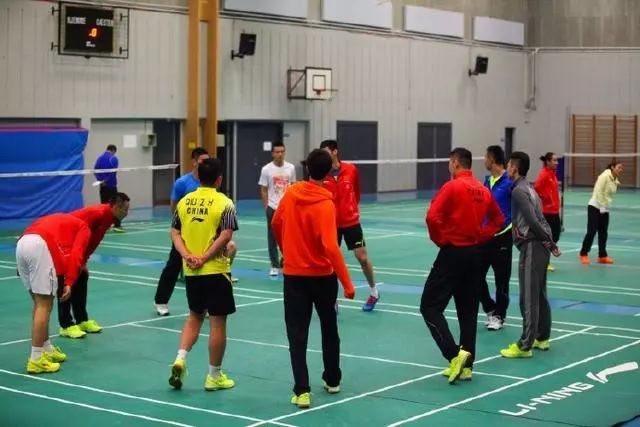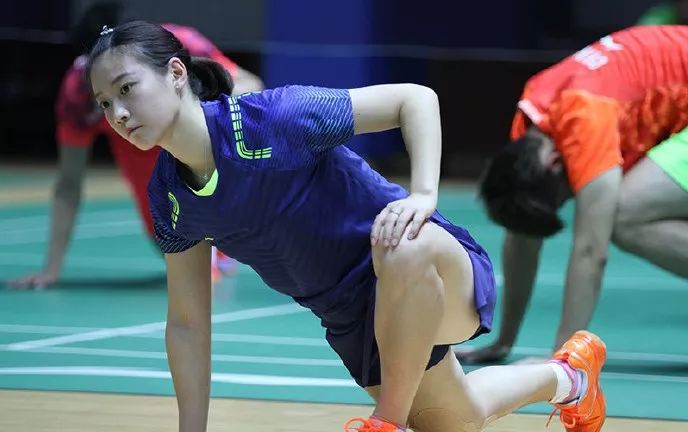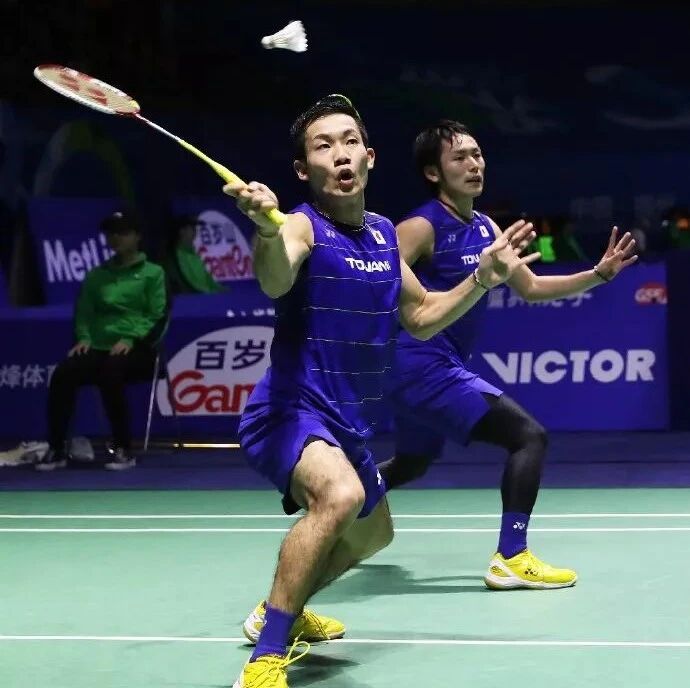Does playing badminton and working up a sweat really cure everything? It's true!

For many amateur players, sweating it out while playing badminton is the ultimate source of enjoyment—and some even believe that breaking a sweat like this can cure just about any ailment. But is that really true? Let’s take a look at some important tips to keep in mind when playing.
I. Precautions Before Playing
1. If you have a cold, fever, cough, or any other illness, please don’t play ball.
As the seasons change, many people experience common illnesses, especially colds. In such cases, it’s best not to jump straight into playing sports. Instead, focus on getting proper treatment promptly—and only resume playing and training once you’ve fully recovered. Some claim that "sweating it out while playing badminton can cure any ailment," but this is simply unscientific.

Avoid exercising while sick at all costs.
2. Try not to play ball within one hour after eating.
After we finish eating, some food has already started to accumulate in our bodies. If you play sports too soon after a meal, it can further increase the strain on your body—especially putting significant pressure on your stomach. On the other hand, playing on an empty stomach isn’t ideal either, as that can also burden your digestive system. So, my advice is to eat something light beforehand and wait at least an hour before jumping into badminton.
3. Warm-up exercises
After several days of inactivity, every part of your body has essentially been "on hold." If you suddenly engage in intense physical activity at this point, it could put unnecessary strain on your joints, potentially leading to injuries like dislocations or sprains—especially in areas such as the wrists, ankles, knees, lower back, and neck. Be sure to focus on key areas by incorporating gentle stretching exercises along with side-to-side crossover runs. And remember: always warm up thoroughly first, allowing your body to gradually recover before jumping into a game of badminton.

Warm-up exercises
4. Pulling the ball
Before starting matches and training sessions, it’s recommended to practice net play techniques with your teammates, such as dropping soft shots at the net or rallying high, long shots across half the court. First, this helps the player’s dominant hand stretch and relax. Second, it allows you to become more attuned to the feel of both the racket and the shuttlecock, enabling you to quickly "find your rhythm" when playing or practicing.
II. Precautions During Play
1. At the start of the race, don’t go too fast or too aggressively.
Some friends haven’t played in a few days, so when they finally return to the court, they immediately go all out with powerful, wide-ranging shots—this approach can easily lead to sprains and strains. To start, it’s best to ease into it gradually, allowing your body to slowly regain its athletic rhythm before ramping up the intensity. That way, you can effectively prevent injuries.
2. Remember to take breaks along the way
Basically, almost every badminton enthusiast can play 2–3 matches in a row. However, when resuming play now, it’s important to take breaks—ideally resting for about 10 minutes between matches—to allow your body to recover. After playing continuously for a few days, you can then resume regular training sessions. This approach is also a healthier way to balance competition and practice.

Remember to rest and stay hydrated.
3. Managing Excessive Sweating
Since you haven’t played for a few days, your body will sweat easily during intense physical activity. Here are two tips for dealing with sweating.
First, when stepping onto the field, make sure to thoroughly dry any sweat from your neck, back, navel, and arms. Since the air temperature is low, failing to do so could leave you vulnerable to catching a cold as your body cools down.
Second, remember to stay hydrated. Even if you don’t feel thirsty, it’s still important to replenish fluids and keep your body’s hydration levels balanced. If you’re already in the habit of drinking lightly salted water, make sure to stick with it.

Hydrating
4. Remember to protect yourself
You often encounter friends who get hit in the face, head, chest—or even the eyes—by balls during play. Since the balls travel at incredibly high speeds, being struck, no matter where, can be intensely painful. And if the impact lands on a vulnerable area, it could lead to more serious issues. That’s why it’s crucial to stay alert and protect yourself while playing; if you can’t catch the ball, make sure to dodge it quickly and decisively!
III. Post-Basketball Precautions
1. Change into dry clothes after finishing your workout—don’t head straight out of the gym.
Wearing clothes soaked in sweat is uncomfortable and can easily lead to a cold, so changing into dry clothing should be your first post-game priority. With significant temperature differences between indoors and outdoors, stepping straight out of the gym could leave you feeling chilled—and even catch a cold as cool air sneaks in through open pores. Instead, we recommend resting inside the gym for a while, allowing your pores, which have widened during exercise, time to return to their normal state before heading out.

Relax, rest
2. Take a hot shower or soak in a hot bath
The warming effect of hot water can improve blood circulation, speed up the elimination of metabolic waste, and promote physical recovery. If possible, taking a warm bath is even more beneficial for rejuvenation.
3. Massage
Performing a relaxation massage on the muscles that bear the most strain and feel the most fatigued can effectively relieve tiredness. It’s recommended to gently and thoroughly knead these areas for an extended period, followed by light tapping—this will help you immediately notice the restorative effects.
4. Frequency
At first, it’s best not to play too frequently—aim for once every 2–3 days, limiting yourself to twice a week. Once you’ve adjusted and feel comfortable, you can gradually increase your playing frequency if possible.
To truly enjoy the long-term benefits and joy that sports bring, remember these key tips: warm up thoroughly before playing, avoid exercising when you’re unwell, stay relaxed during your game—steer clear of overly intense activity—and make sure to rest afterward to help your muscles recover.


Related Articles

Is the quality of your passing consistently low? First, check if you’re doing *this* right!

Tribute! Former head coach of China's national badminton team passes away at 89 after a battle with illness—once honored as a People's Role Model!
